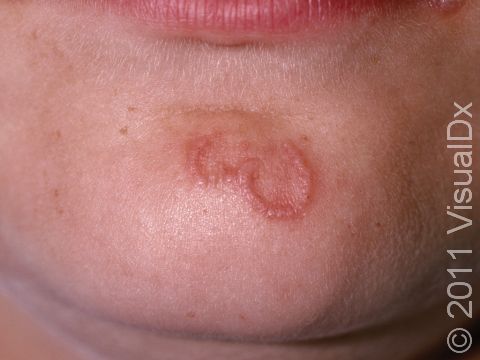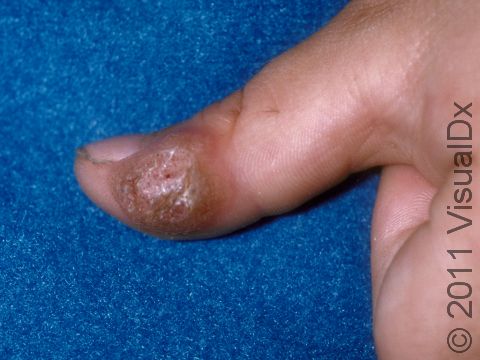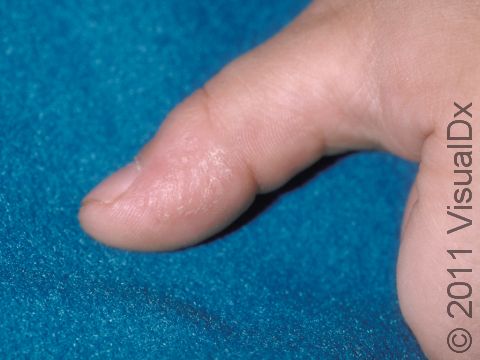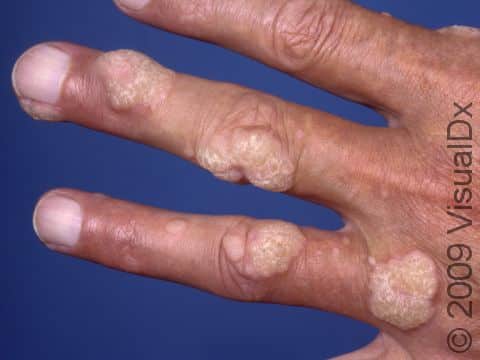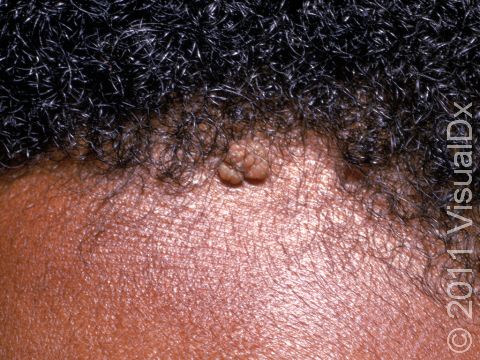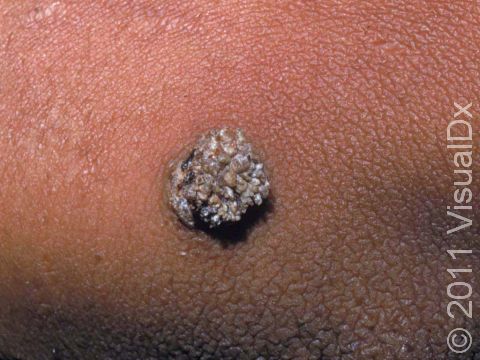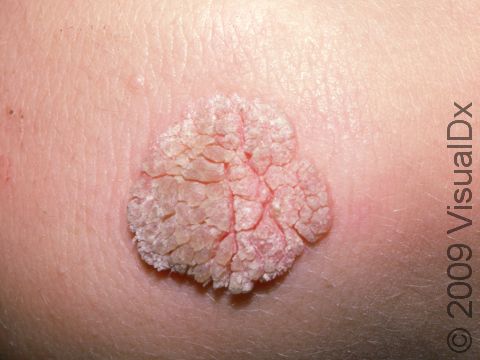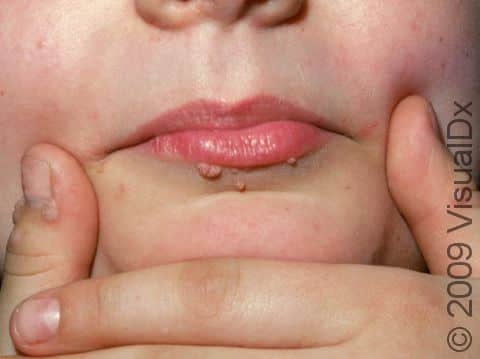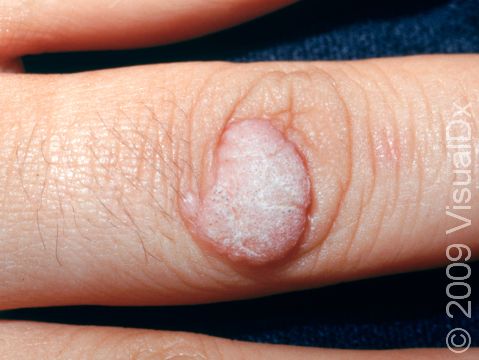Common Wart
Warts are growths of the skin and mucous membranes (inside the mouth or genitals) that are caused by a virus known as the human papillomavirus (HPV). Common warts (verruca vulgaris) are usually found on areas of the body prone to trauma, such as the elbows, knees, and hands. The virus causes thickening of the top skin layer. They are usually painless and go away on their own, sometimes taking a few months or up to a couple years to resolve.
Warts are usually acquired from person-to-person contact. The virus is not highly contagious but can cause an infection by entering through a small break in the skin. In the same way, warts can be spread to other places on your own body (self-inoculation). The virus can sometimes be transferred by touching an object used by an infected person.
Some other types of warts include plantar warts, flat warts, genital warts, and periungual warts (warts that grow under or along the nail).
Who's At Risk?
Warts can affect people of any age, but they are most common between the ages of 12-16 years. It is estimated that 20% of schoolchildren and about 10% of the general population have warts. Warts can affect any race / ethnicity. People with HIV, organ transplants, or those who are on chemotherapy have a higher incidence of warts due to their weakened immune system.
Signs & Symptoms
Warts may occur singly or in multiples and often have what appear as multiple small black “dots” at the surface from tiny blood vessels.
- Common warts are rough, thick papules (solid bumps) ranging in size from 1 mm to over 10 mm, often on the hands, face, elbows, and knees.
- Filiform warts are long and narrow, like tufts of thread, and usually small at the base (1-3 mm); they often affect the face, eyelids, or nose.
- In lighter skin colors, warts may be pink, skin-colored, or light brown. In darker skin colors, warts may be pink, skin-colored, purple, brown, or gray.
- Warts can be covered with scale, which can be whitish, yellow, brown, or gray.
Self-Care Guidelines
Because warts can resolve on their own, it is not necessary to treat all warts. Additionally, treating warts may not always destroy them, nor will it necessarily keep other warts from appearing. Treatment can be painful, cause scars, and need to be repeated, so treatment should only be done in cases where the warts are highly bothersome or interfere with daily life.
- Over-the-counter wart removers (eg, Compound W) high percentage of salicylic acid and work by dissolving away the layer of skin infected with the virus. This treatment needs to be used daily and can sometimes be irritating to skin around the wart.
- Duct tape applied daily to the affected area can help remove warts. The tape should be very sticky and kept on for a few days at a time.
- Over-the-counter freezing medications are available but have not been found to be very effective.
- Coupled with the above therapies, the wart should be soaked in warm water, and any loose skin should be removed every few days with a mild abrasive, like a pumice stone.
- Family members should avoid sharing personal items such as towels.
Treatments
- Destruction with freezing (cryosurgery), burning (electrocautery), laser or cantharidin, podophyllin, tretinoin, or acid application
- Injection of chemotherapy drugs
- Application of imiquimod, an immunotherapy agent, or other chemicals, which induce an allergic reaction to destroy the wart
Visit Urgency
See a medical professional in the case of:
- Painful or bleeding warts.
- Warts on the face and those interfering with daily life that do not respond to self-care measures.
- Diabetes – Warts of the feet should be treated by a health professional.
Trusted Links
References
Bolognia J, Schaffer JV, Cerroni L. Dermatology. 4th ed. Philadelphia, PA: Elsevier; 2018.
James WD, Elston D, Treat JR, Rosenbach MA. Andrew’s Diseases of the Skin. 13th ed. Philadelphia, PA: Elsevier; 2019.
Kang S, Amagai M, Bruckner AL, et al. Fitzpatrick’s Dermatology. 9th ed. New York, NY: McGraw-Hill Education; 2019.
Paller A, Mancini A. Paller and Mancini: Hurwitz Clinical Pediatric Dermatology. 6th ed. St. Louis, MO: Elsevier; 2022.
Last modified on July 8th, 2024 at 12:59 pm

Not sure what to look for?
Try our new Rash and Skin Condition Finder
